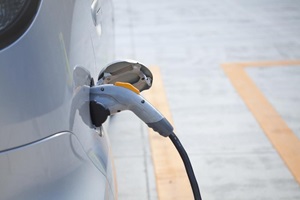- Transportation Efficiencies
- Policy Regulation
- Clean Transportation
- Clean Transportation
Utilities Bet on Open Standards for PEV Charging

Electricity as a transportation fuel has only been used in a few mass transit platforms like light rail that are large-scale megawatt consumers. These platforms have highly predictable load patterns, and these electricity consumers are generally visible to utilities because their load is large enough to require utility coordination on infrastructure development. The next step in transportation electrification, happening now, is the advent of light duty, individually owned plug-in electric vehicles (PEVs). This is a step toward less predictable load shapes and less load visibility (not good from a utility perspective), but also one toward increased load and theoretically highly flexible load (which is good).
Understandably, utility interests in this new load have varied largely as a function of expected PEV adoption in a utility's territory. Since the emergence of mass market PEVs in 2010, many utilities were skeptical of the potential for PEVs, in part because many initial market adoption forecasts turned out to be highly optimistic. However, with over 6 years of market development in the books that have witnessed marked advances in PEV capabilities alongside reduced costs—exemplified by the Chevrolet Bolt and Tesla Model 3—utilities are coming around to the realization that a PEV strategy is a must. The latest example of this need is an investment from Energy Impact Partners (EIP) in the EV charging services company Greenlots.
This investment is an important indicator of utility interests because EIP is a utility investment group that represents a network of 47 utilities in 12 countries and this is its first investment regarding EV charging services. The investment is especially significant because Greenlots, which offers EV charging and energy management solutions, is one of the more vocal proponents of an open standards-based approach to charging network development.
In a sense, Greenlots is championing a system analogous to cell phone services in which the equipment (cell phone) is not tied to a service provider (e.g., Sprint, Verizon, etc.), allowing charging station owners to switch between service providers as they see fit. This is not the way PEV charging services originated. Many early installations were and continue to be tied to a manufacturer’s hardware and management software platforms. When or if these manufacturers fail (as happens with emerging markets), their installed equipment can become ineffective.
Beyond the concern of stranded charging units, the evolution of PEV charging encompasses a variety of services for which no one company is likely to have the best solution. Therefore, vendor lock-in could be detrimental to preventing obsolescence. Equipment-agnostic services can include the dynamic management of PEV load in time with grid operator pricing signals, the discharging of power from vehicle into infrastructure, vehicle energy information interfaces for consumers, and streamlined payment and transaction management systems, among others. Flexibility among major consumers (utilities, energy service companies, and/or property owners) to pick among such solutions can reduce costs while enhancing the ability to share data from multiple services.